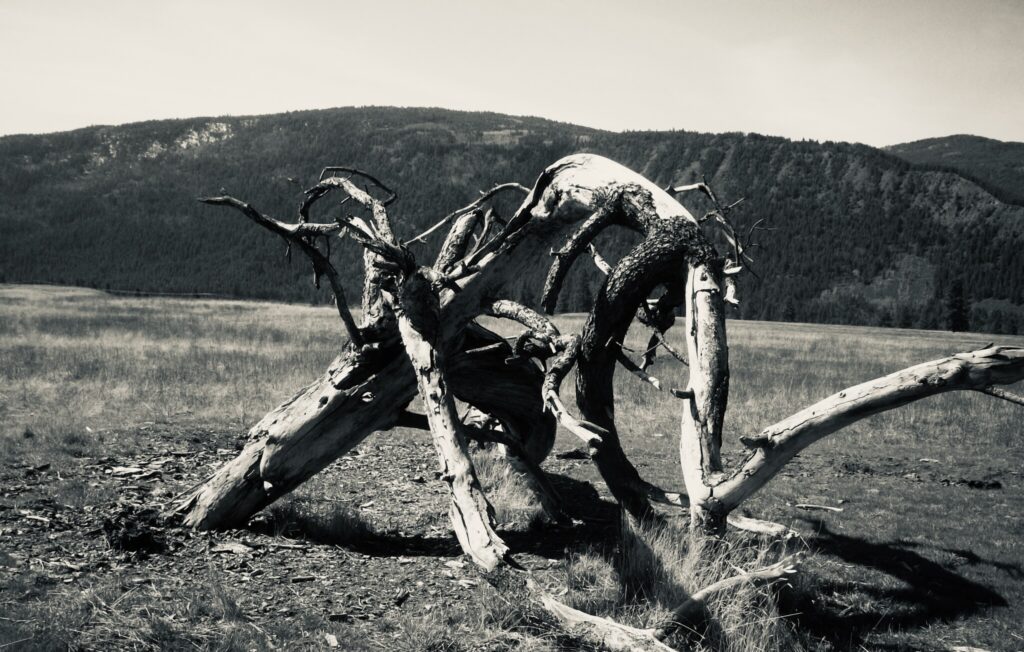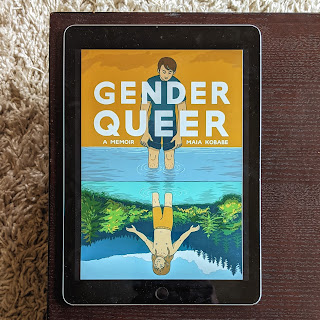Review: Bones of a Giant by Brian Thomas Isaac
Bones of a Giant by Brian Thomas Isaac
Toronto: Random House Canada, 2025
Toronto: Random House Canada, 2025
This is a great book to read as summer begins! I was happy to review it for The British Columbia Review. This article was originally published on The BC Review on June 5, 2025.
***
It’s with the golden-hued, endless days of summer that Brian Thomas Isaac opens his latest novel Bones of a Giant. School is out, and sixteen-year-old Lewis Toma’s 1968 summer stretches out before him, holding worlds of possibility. He lives with his mother Grace and her friend Isabel in an old house on the Okanagan Indian Reserve in southern BC. His older brother Eddie disappeared two years ago after a tragic accident, and no one knows if he left or took his own life.
When Grace and Isabel head to the United States for seasonal work, Lewis moves in with his nearby cousin Martin and family. But the summer hums with a threat of distant trouble: his absent father is back and out to take their land; and Lewis has to face a few pretty shocking events that test his ability to cope.
This is Thomas Isaac’s follow-up to his previous book featuring the Toma family, the 2022 Governor General’s Award for Fiction finalist All the Quiet Places, which focused on Eddie’s adolescence. Readers unfamiliar with the first novel will find a complete and satisfying experience in Bones of a Giant, and those who are reading this as a follow-up will likely be very satisfied with the continuation of this compelling story.
The first half of the novel brings the sun-baked Okanagan into delightful view. We follow Lewis as he explores the river that runs adjacent to the family property, basking in lazy days and enjoying freedom from the daily grind of school. When Grace and Isabel head south to make some extra money, Lewis embraces his newfound freedom with exuberance. He experiments with being his own man as he gets to know his cousin’s family, takes on more responsibility on their farm, and falls in love for the first time with the neighbour girl.
The West Kelowna-based author renders the semi-arid Okanagan landscape beautifully; I could feel the hot sun on my back, the land under my feet. On a river-tubing excursion, Thomas Isaac writes, “Each step felt hotter than the one before. The dry hay stubble crunching under their old running shoes teemed with golden grasshoppers that hurled themselves into the air as they passed.” The cool river evokes memories of summers past:
"When he hit the water, he felt as if he had fallen through the floor of one world and crashed through the ceiling of another. The deeper he sank, the cooler the water felt. When his feet touched the bottom, he resisted the urge to return to the surface as streaming sunbeams swirled like northern lights.
It’s with the golden-hued, endless days of summer that Brian Thomas Isaac opens his latest novel Bones of a Giant. School is out, and sixteen-year-old Lewis Toma’s 1968 summer stretches out before him, holding worlds of possibility. He lives with his mother Grace and her friend Isabel in an old house on the Okanagan Indian Reserve in southern BC. His older brother Eddie disappeared two years ago after a tragic accident, and no one knows if he left or took his own life.
When Grace and Isabel head to the United States for seasonal work, Lewis moves in with his nearby cousin Martin and family. But the summer hums with a threat of distant trouble: his absent father is back and out to take their land; and Lewis has to face a few pretty shocking events that test his ability to cope.
This is Thomas Isaac’s follow-up to his previous book featuring the Toma family, the 2022 Governor General’s Award for Fiction finalist All the Quiet Places, which focused on Eddie’s adolescence. Readers unfamiliar with the first novel will find a complete and satisfying experience in Bones of a Giant, and those who are reading this as a follow-up will likely be very satisfied with the continuation of this compelling story.
The first half of the novel brings the sun-baked Okanagan into delightful view. We follow Lewis as he explores the river that runs adjacent to the family property, basking in lazy days and enjoying freedom from the daily grind of school. When Grace and Isabel head south to make some extra money, Lewis embraces his newfound freedom with exuberance. He experiments with being his own man as he gets to know his cousin’s family, takes on more responsibility on their farm, and falls in love for the first time with the neighbour girl.
The West Kelowna-based author renders the semi-arid Okanagan landscape beautifully; I could feel the hot sun on my back, the land under my feet. On a river-tubing excursion, Thomas Isaac writes, “Each step felt hotter than the one before. The dry hay stubble crunching under their old running shoes teemed with golden grasshoppers that hurled themselves into the air as they passed.” The cool river evokes memories of summers past:
"When he hit the water, he felt as if he had fallen through the floor of one world and crashed through the ceiling of another. The deeper he sank, the cooler the water felt. When his feet touched the bottom, he resisted the urge to return to the surface as streaming sunbeams swirled like northern lights.
All around him, everything looked different. River stones looked like boulders in a wide valley. Water weed clinging to sticks were green flags bending away from a bubbling wind, and the reeds by the shore were trees that grew so tall they poked up through the ever-moving sky."
In contrast to the untainted beauty of the natural world, the human realm brings a fair amount of disturbance. There’s danger on the horizon, but it doesn’t come to the forefront until the novel’s second half. Lewis’ father Jimmy, who has been absent for years, threatens to take their land, as the Indian Act promotes patriarchal inheritance. Not only that, but he plans to use it for criminal purposes. Add to that an entirely disturbing sexual encounter with an older woman who preys on Lewis’ inexperience, and there is a tonal change as the book moves forward.
In contrast to the untainted beauty of the natural world, the human realm brings a fair amount of disturbance. There’s danger on the horizon, but it doesn’t come to the forefront until the novel’s second half. Lewis’ father Jimmy, who has been absent for years, threatens to take their land, as the Indian Act promotes patriarchal inheritance. Not only that, but he plans to use it for criminal purposes. Add to that an entirely disturbing sexual encounter with an older woman who preys on Lewis’ inexperience, and there is a tonal change as the book moves forward.
 |
| Author Brian Thomas Isaac |
What makes the novel so very compelling is the talent that Thomas Isaac has for writing naturalistically, with dialogue that reads true to life, and character reactions that feel realistic, and never over the top. This is a world where youth can take time to ponder problems and work through their emotional distress, and to talk to close friends and trusted adults. While there is plenty of traumatic content on the page, often the characters respond with a helping of gallows humour, stoicism, or acknowledgement that there is no option but to struggle with it and move on.
Perhaps that’s is related to the constant background of prejudice experienced by Lewis and his family in this 1968 world where Indigenous people live under constant menace from the Indian agent who shows up to monitor their activities; and from neighbours who see them as second-class citizens. Lewis’ slightly lighter skin leads to uncalled for comments from classmates: “I heard that on my very first day at school. A girl on the bus said that I prob’ly have a different dad, and her friend said, ‘They all do.’”
Occasional chapters from Grace and Isabel’s points of view lend the novel a fantastic punch of mighty female voices. I loved these two strong, sensible women who are fighting a patriarchal system with the weapons of common sense and sardonic humour. Their compassion for others who have been affected by the yoke of a colonial system is remarkable and refreshing. It’s not only these two matriarchs, but almost everyone at some point, who engage in acts of rebellion, adventurous capers that skirt comedic slapstick at times.
Consider Mr. Husk, a terribly cantankerous and racist neighbour, who jealously guards his property while simultaneously taking advantage of Lewis’ uncle’s farmland to graze his cows. After he chases off Lewis and his friends when they find arrowheads, precious artifacts of their own history, they hatch a scheme to sic killer roosters on him to get revenge and rescue the unearthed arrowheads. Indeed, this novel offers a slice of life story that tackles real issues but also entertains.
Indigenous history permeates the storyline, as Lewis’ attention is tugged from the joys and heartaches of summer days to his growing awareness of his ancestors. Nearby, the ancient body of a chief is unearthed, wrapped in birchbark in a gravesite overlooking the lake. “A strange feeling of wonder came over Lewis after seeing the remains of a once important Indian buried long ago,” Thomas Isaac writes, “It was mystical, almost holy.” Lewis hears about the older customs for burying the dead in a conversation with his Aunt Jean:
"That’s the difference between Indians and white people. Indians, especially the old ones, treat the dead different. They have a lot of respect for the dead and they show it in their own way. They dig the graves themselves and bury the coffin too, while the summas let somebody else do it. And they brush the grave with a sweeper made of the plants and weeds that grow there, like they’re welcoming the dead back to the earth."
All this relates back to the natural world that surrounds Lewis. Near the river on his family’s property, he comes across a fallen tree, “its large broken branches reaching out. Bark hung down like ragged clothes on bleached arms. Eddie had told Lewis the tree looked like the bones of a giant.” Its stump is a secret refuge for wildlife and holds memories of Lewis’ missing brother—“No one but Lewis knew that this was Eddie’s hidden place. And Lewis had only come upon it because he followed Eddie to the spot and saw him crawl inside the tree stump… When he sat here by himself, Lewis could almost feel Eddie’s presence.”
There’s a peaceful rhythm to Bones of a Giant, and a languid quality to the writing which speaks to the pace of bygone life on Okanagan Indian Reserve. But like the river that runs through the region, there are depths to this story that showcase the consequences of racism, misogyny, and colonialism.
Thomas Isaac doesn’t shy away from this harsh reality, yet treats his characters with a tenderness and respect that emphasizes their resilience. There isn’t a pat ending here. As mom Grace notes: “I wish I could be like you, Isabel. You say everything is gonna be good and that it’s all worked out for the best, like it was tied together with a pretty blue ribbon. But I don’t think like that. Everything isn’t that easy.” This lends a note of authenticity to the story, and indicates that perhaps we will hear more about the Toma family as their saga continues.
Perhaps that’s is related to the constant background of prejudice experienced by Lewis and his family in this 1968 world where Indigenous people live under constant menace from the Indian agent who shows up to monitor their activities; and from neighbours who see them as second-class citizens. Lewis’ slightly lighter skin leads to uncalled for comments from classmates: “I heard that on my very first day at school. A girl on the bus said that I prob’ly have a different dad, and her friend said, ‘They all do.’”
Occasional chapters from Grace and Isabel’s points of view lend the novel a fantastic punch of mighty female voices. I loved these two strong, sensible women who are fighting a patriarchal system with the weapons of common sense and sardonic humour. Their compassion for others who have been affected by the yoke of a colonial system is remarkable and refreshing. It’s not only these two matriarchs, but almost everyone at some point, who engage in acts of rebellion, adventurous capers that skirt comedic slapstick at times.
Consider Mr. Husk, a terribly cantankerous and racist neighbour, who jealously guards his property while simultaneously taking advantage of Lewis’ uncle’s farmland to graze his cows. After he chases off Lewis and his friends when they find arrowheads, precious artifacts of their own history, they hatch a scheme to sic killer roosters on him to get revenge and rescue the unearthed arrowheads. Indeed, this novel offers a slice of life story that tackles real issues but also entertains.
Indigenous history permeates the storyline, as Lewis’ attention is tugged from the joys and heartaches of summer days to his growing awareness of his ancestors. Nearby, the ancient body of a chief is unearthed, wrapped in birchbark in a gravesite overlooking the lake. “A strange feeling of wonder came over Lewis after seeing the remains of a once important Indian buried long ago,” Thomas Isaac writes, “It was mystical, almost holy.” Lewis hears about the older customs for burying the dead in a conversation with his Aunt Jean:
"That’s the difference between Indians and white people. Indians, especially the old ones, treat the dead different. They have a lot of respect for the dead and they show it in their own way. They dig the graves themselves and bury the coffin too, while the summas let somebody else do it. And they brush the grave with a sweeper made of the plants and weeds that grow there, like they’re welcoming the dead back to the earth."
All this relates back to the natural world that surrounds Lewis. Near the river on his family’s property, he comes across a fallen tree, “its large broken branches reaching out. Bark hung down like ragged clothes on bleached arms. Eddie had told Lewis the tree looked like the bones of a giant.” Its stump is a secret refuge for wildlife and holds memories of Lewis’ missing brother—“No one but Lewis knew that this was Eddie’s hidden place. And Lewis had only come upon it because he followed Eddie to the spot and saw him crawl inside the tree stump… When he sat here by himself, Lewis could almost feel Eddie’s presence.”
 |
| The ‘bones of a giant’ tree in Salmon Valley (photo: courtesy of the author) |
There’s a peaceful rhythm to Bones of a Giant, and a languid quality to the writing which speaks to the pace of bygone life on Okanagan Indian Reserve. But like the river that runs through the region, there are depths to this story that showcase the consequences of racism, misogyny, and colonialism.
Thomas Isaac doesn’t shy away from this harsh reality, yet treats his characters with a tenderness and respect that emphasizes their resilience. There isn’t a pat ending here. As mom Grace notes: “I wish I could be like you, Isabel. You say everything is gonna be good and that it’s all worked out for the best, like it was tied together with a pretty blue ribbon. But I don’t think like that. Everything isn’t that easy.” This lends a note of authenticity to the story, and indicates that perhaps we will hear more about the Toma family as their saga continues.



Comments
Post a Comment